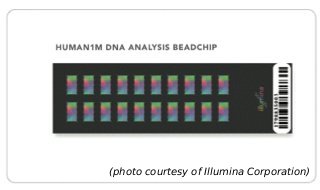Genomics
Education
Initiative
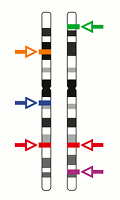
SNPsAndChips.com
This is part ONE of a TWO-PART tutorial.
How to use this tutorial
Each panel uses text and an image to explain a concept or define a term that will be used later. If the meaning of a word is unclear to you, just scroll back and review the panel where it was first introduced. The last panel of each section is a review of key terms and concepts.
Some images reveal extra information when you point to or click on them. To illustrate ...
... point to the image to show the full figure:
Enjoy learning about genomics !
Nearly every cell in your body has a nucleus that holds the genetic program that dictates your physical characteristics. This information is stored in chromosomes.
Each cell nucleus contains a two complete sets of chromosomes. Thus, your body contains billions of identical copies of your genetic program: two copies stored in each cell nucleus.
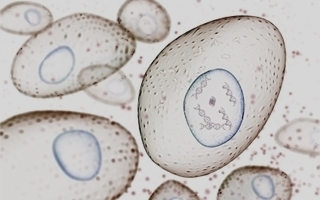
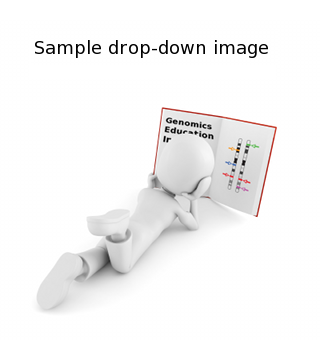
Chromosomes are made of DNA: a very long ladder-like molecule that is tightly packaged into into the rod-like shape we recognize as a chromosome.
The "rungs" of the DNA "ladder" are made of pairs of units that connect in the middle. These units are called nucleotides and the "ladder rungs" are referred to as nucleotide pairs, or base pairs.
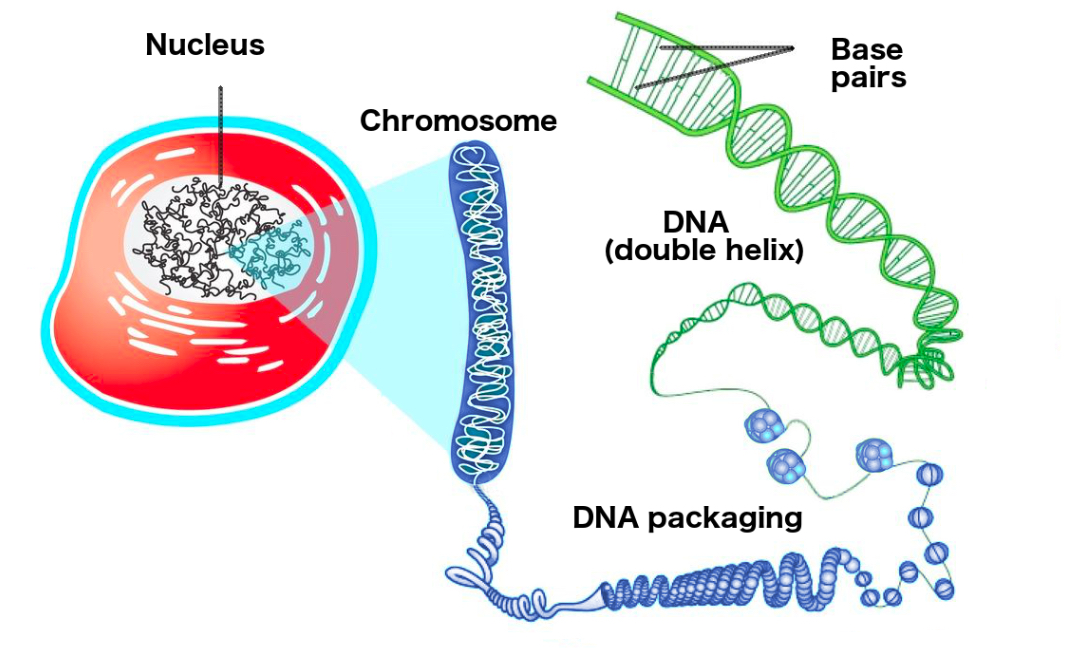
DNA has two strands (shown here as red and green), and four nucleotides (A T G C) that pair: A-T, and G-C. Genetic information is stored in the exact list, or sequence of the nucleotides.
Just as a computer stores data as a long but precise list of 1's and 0's, cells store genetic information as a precise sequence of A, T, G, and C in the chromosomes.
(We unusally list the sequence of just one strand. The sequence of the other is defined by the A-T / G-C rule.)
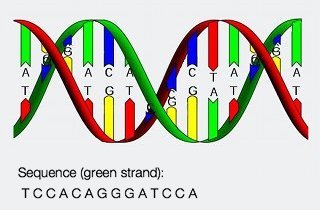
If we spill out the DNA from a cell nucleus, we see that it can be arranged in an ordered array of 23 pairs of chromosomes. All but the last pair in the array have been assigned numbers (1 to 22). The members of each pair are nearly (but not exactly) identical to each other.
(Point to the image to show the complete figure.)
(This DNA is from a woman. In men, the final pair, named "X", is replaced by a single X together with a single copy of another chromosome named "Y".)
We can determine the DNA sequence of entire chromosomes. The full sequence of all 24 chromosomes (1-22 + X + Y) is called the human genome.
The genome is very long (3 billion letters in all), but it is precise. It is accurately maintained in nearly all cells in the body.
(Chromosomes are much longer than they look here. The DNA is tightly coiled and compacted.)
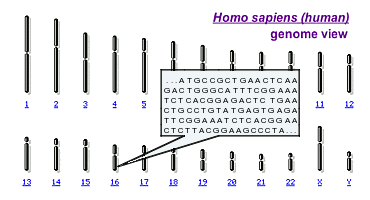
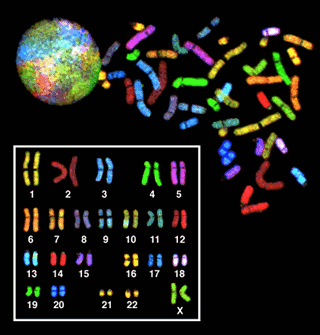
Surprisingly, the human genome sequence is 99.6% identical in all people. This is true of all humans, regardless of race or heritage.
However, there are certain positions where some people have one nucleotide pair, while others have another. These positions are known as SNPs (pronounced "snips").
(Point to the image to show the complete figure.)
("SNP" stands for "Single Nucleotide Polymorphism".)
SNPs make up only 0.4% of the genome. But since the genome is so big, 0.4% equals 12 million places. Our differences at these places make each of us unique.
A SNP may be thought of as an address. It is a physical location on a particular chromosome. Like the address of a house on your street, a SNP may have various "occupants". The possible "occupants" are the four nucleotides, A, T, G, & C.

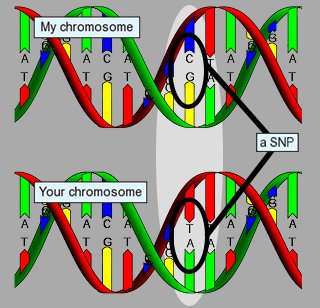
We use the term allele (pronounced ull-leel') to identify which nucleotide is present at a SNP.
For example, here is a segment of sequence from chromosome 1 that has a SNP. Paul and Julia have the G allele on both of their copies of this chromosome. However, Jose has one G and one A allele, and Roger has two C alleles.
(The SNPsAndChips logo (see top of this page) is an artistic rendition of SNPS on a pair of chromosomes.)
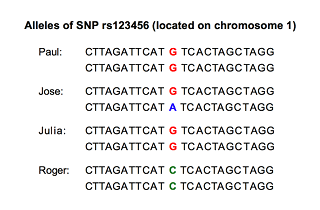
Very efficient methods have been developed for determining SNP alleles. For example, this slide, which is less than 3 square inches in size, has 20 DNA chips that each have thousands of microscopic reaction sites.
The slide can test over a million SNPs for one person in one step. It is simply soaked in a chemically treated sample of saliva or blood, then placed in a machine that collects the data and sends it to a computer.
